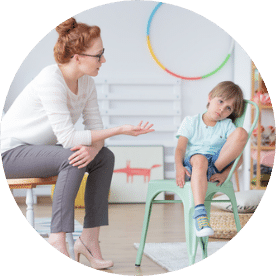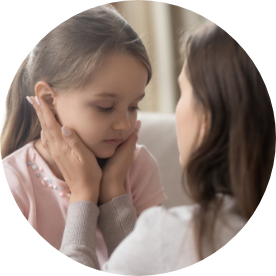— For Parents
Observe and Describe for Children
Resources
Podcast: Mastering Observe and Describe
Download PDF(s)
Suggestions for parents when learning the skill of Observe and Describe

Using phrases like, “I noticed that…” can help address issues in a less confrontational way and avoid defensiveness.

It takes two to argue: if you’re noticing an argument start, then focus on Observing and Describing the original issue. Your child may try to shift focus on other things. When this happens, repeat your observation rather than following them down the rabbit hole.

If you use the Observe and Describe technique and your child becomes more defiant, you can continue to use this technique and describe the defiant behavior. This might sound like, “right now your voice is getting very loud and your shoulders are rising.”

You can use this concept if you feel like you don’t know what to say to your child. Parents who use this during tantrums are more likely to help keep themselves calm, as well as their child.
Observe and Describe can be used for positive and negative behaviors. Feel free to use it all the time with your child so it becomes second nature.

Encourage your child to observe and describe when they have a problem or concern. Rather than saying things like, “I hate you”, teach them to put words together like, “when you yell at me I feel like running out of the room.”
Using this technique will help keep things calm. Assessing the situation in a calm manner helps children and parents prepare for a solution and avoids arguing. If a parent is angry, frustrated, or upset and responds that way, the child will either submit to the parent out of fear, or begin to argue, making the situation worse. Parents who use this skill may notice their children beginning to use it.
